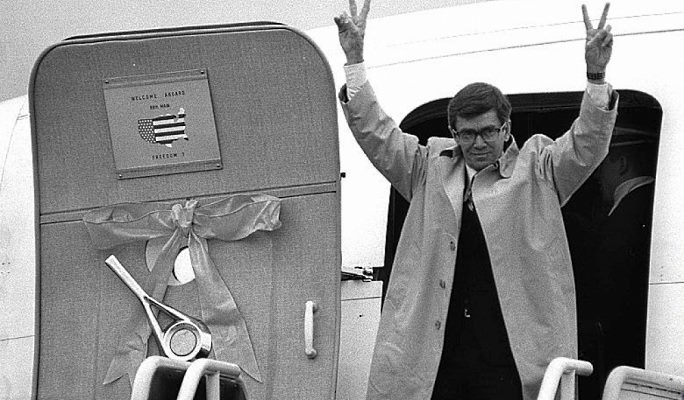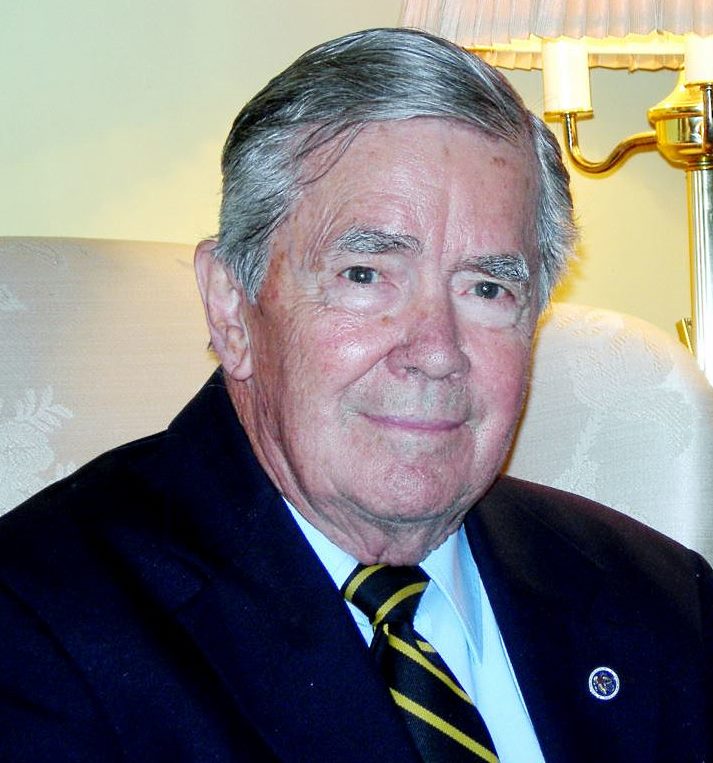Odin native L. Bruce Laingen was one of the American hostages

A Christmas Eve surprise. It was first revealed by the newspaper USA Today on Thursday, December 24. that compensation for American Embassy personnel held hostage for 444 days in Iran more than three decades ago had been approved.
A provision buried in the spending bill signed into law by President Barack Obama last week will give up to $4.4 million to each of the 37 surviving hostages – or the estates of 16 others who died in the years since their release. The sum works out to $10,000 for each day of their captivity and will come, in part, from a $9 billion penalty paid by the French bank BNP Paribas for violating sanctions against Iran, Cuba and Sudan.b
Former captives and their lawyers had fought for years to get a measure of vindication – and some closure.
The financial settlement also provides potential benefits for victims of other terrorist attacks, including the 1998 United States Embassy bombings in East Africa and for first responders to the Septtember 11, 2001, attacks.
The seizure of the hostages at the United States Embassy in Tehran, and held between November 1979 and January 1981, was one of the defining foreign relations crises of the 20th century. It fractured relations between Iran and the United States.
The former hostages were barred by the federal government from taking legal action against Iran under the 1981 Algiers Accords, brokered by Algerian diplomats, that led to their release. United States courts, the State Department and presidents all opposed their attempts to sue, citing the deal reached in Algiers. So lawyers turned to Congress for help, but even those efforts failed time and again.
The part of the bill that brought them vindication was introduced by Senator Johnny Isakson (R-Georgia.), chairman of the Senate Veterans Affairs Committee who counts three former hostages among his constituents. He had introduced compensation legislation for the Iran hostages every year since 2013.
The law also authorizes payments of $600,000 for each spouse or child of a hostage.
The $1.1 billion of the Paribas penalty set aside to repay victims of Iran and other terror attacks is not sufficient to cover all the claims, but the fund will remain open for 10 years so it can be replenished by future fines on sanctions violators and other offenders.
One of the hostages held was Odin native, Lowell Bruce Laingen, now 93-years-old. Laingen was United States Ambassador to Malta from 1977 to 1979. During the Iran Hostage Crisis, Laingen, who was 57 at the start of the ordeal, was the most senior American official held, serving as the Charge d’affaires (head of diplomatic mission) at the embassy since June 1979.
On November 4, 1979, the embassy was overrun by student protesters during the Iranian Revolution. Sixty-three hostages were taken at the embassy, while Laingen and two others were seized at the Iranian Foreign Ministry Office. Laingen and 51 hostages were released on January 20, 1981, following those 444 days of captivity. Laingen remains the last American head of mission to Iran, as direct bilateral diplomatic relations between the two governments were severed following the seizure of the embassy and have not been restored.
During those 444 days, Laingen’s wife, Penny, began a response that spread across the nation when she tied a yellow ribbon around the oak tree in the yard of the family’s home in Virginia.
He was awarded the State Department’s Award for Valor, along with other recognitions, following his ordeal.
Laingen’s next position following his release was that of Vice-President of the National Defense University, a post traditionally held by a senior diplomat. He retired from the Foreign Service in 1987 after 38 years of service.
During his time as a hostage, Laingen kept a secret journal, which was later turned into the book, “Yellow Ribbon: The Secret Journal of Bruce Laingen.” His letters from that time to Joel Hettger are kept in the Library of Congress.
Reflecting on his days as a hostage, Laingen is quoted to have said, “Human beings are like tea bags. You don’t know your own strength until you get in hot water.”
(On a personal FYI, I was eight months pregnant with our son, Jon, when Laingen returned to his hometown of Odin for a Valentine’s Day – Saturday, February 14, 1981 – “Welcome Home” reception. The crowd was gathered in a vacant lot just west of the old Odin Town Hall. And – I stood in line with all the well-wishers to get the former hostage’s autograph.)
Some hostages have said they thought the push to reconsider their claims came after the Iran nuclear deal in July and the 2012 Ben Affleck film “Argo,” a political thriller about the CIA’s (Central Intelligence Agency) rescue of six United States diplomats in Tehran.
During their time held captive, many of the hostages were treated horribly. They endured mock firing squads and beatings with rubber hoses and were hung over elevator shafts and forced to run blindfolded into trees. The emotional toll on them, and their families, was severe, and in some cases they suffered depression and ruptured personal relations after their release.
One former hostage committed suicide, and there were several suicide attempts. PTSD (Post-Traumatic Stress Disorder) was not really well known 40 years ago. When the hostages returned home to the United States, there was a big parade – a million-and-a-half people crowded onto Broadway – but then they were forgotten.
No surprise that the days of their captivity altered the course of their lives.


















